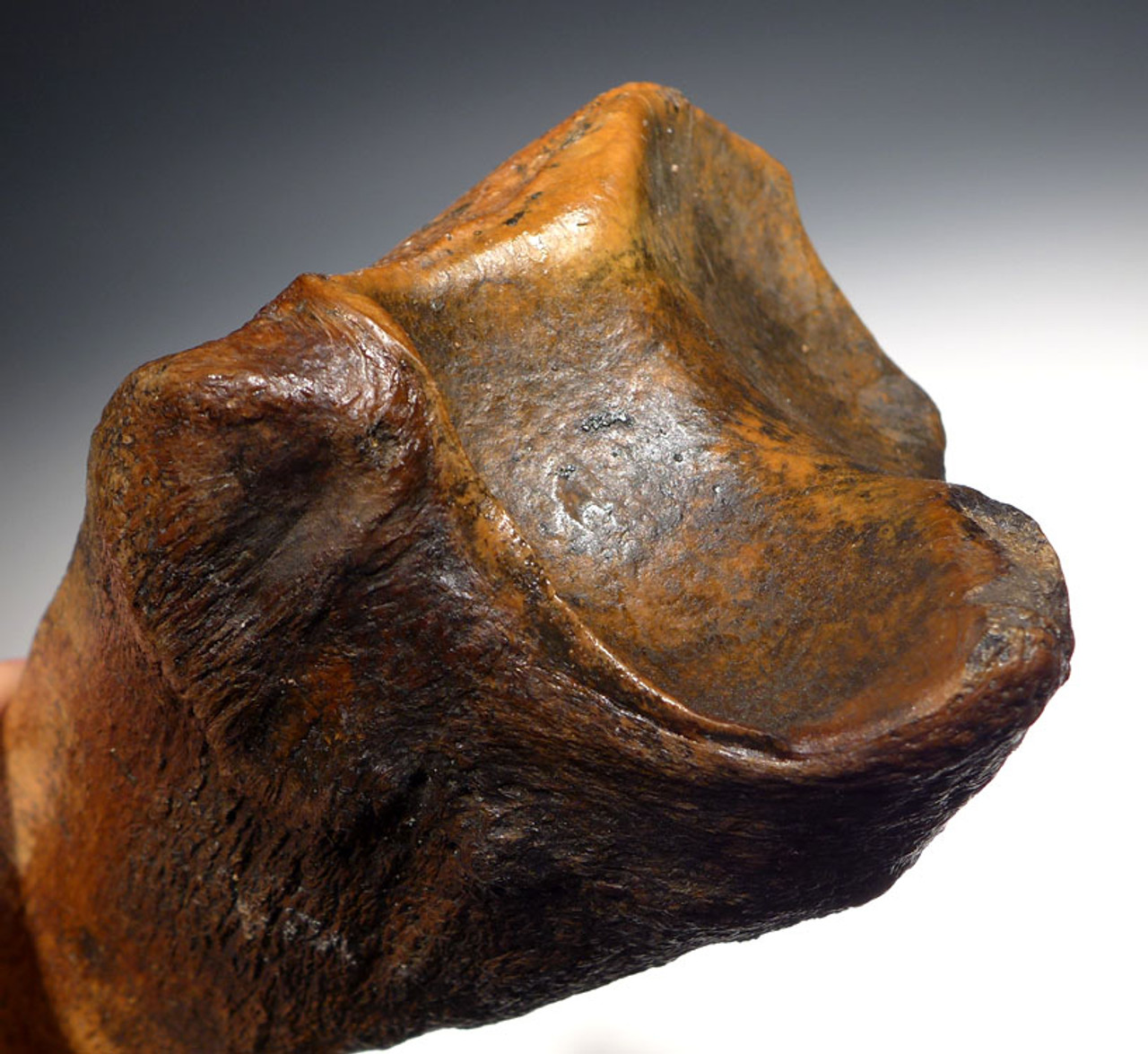Product Description
From a preyed-upon Woolly Rhinoceros, this partially eaten radius bone shows severe and dramatic gnawing by adult and juvenile Giant European Cave Hyenas on the proximal end. There is a hollowed region inside where they hyenas gnawed away, feasting on the blood and marrow rich interior. Ironically, the other end is untouched and perfect with no bite marks. On the eaten end, you can see deep fang teeth drag marks in several directions as the hyenas ate as much as they could in this exposed area.
Fossil bones like this that show clear evidence of hunter and prey relationships, are RARE AND DESIRABLE in the fossil record when they are this large and severe.
The European Cave Hyena was a bone-crushing killer that had powerful enough jaws to sever crush and chew bone in an attempt to get to the desired nterior spongy areas, inside. Smaller pups had snouts that could reach the deep interiors of the bones of their prey. The predator relationships that Ice Age European hyenas had against a number of other megafauna including rhinos, is well-documented in scientific publication. This is THE MOST IMPRESSIVE eaten Woolly Rhinoceros bone we have seen and it was part of a large private Ice Age collection of the best material.
This fossil would also make a great compliment to a primitive man stone tool and weapon collection as they lived alongside each other at one point in history and both Neanderthal man and Cro-Magnon man were preyed upon by hyenas as well as competed for living quarters in rock shelters.
CLICK HERE TO LEARN MORE ABOUT THE WOOLLY RHINOCEROS
References:
Diedrich C. 2006a. By ice age spotted hyenas protracted, cracked, nibbled and chewed skeleton remains of Coelodonta antiquitatis (Blumenbach 1807) from the Lower Weichselian (Upper Pleistocene) open air prey deposit site Bad Wildungen-Biedensteg (Hesse, NW Germany). Journalof Taphonomy 4: 173–205.
Diedrich C. 2006b. The Crocuta crocuta spelaea (Goldfuss 1823) population from the early Upper Pleistocene hyena open air prey deposit site Biedensteg near Bad Wildungen (Hesse, NW Germany) and contribution to their phylogenetic position, coprolites and prey. Cranium 23: 39–53.
Diedrich C. 2007a. Bone crackers and carcass accumulators in Central Bohemia – Late Pleistocene hyenas and their cave den and prey depot types. Scripta Facultatis Scientiarum Universitatis Masarykianae, Geology 35: 91–96.
Diedrich C. 2007b. The Upper Pleistocene Crocuta crocuta spelaea (Goldfuss 1823) population and its prey from the gypsum karst den site Westeregeln near Magdeburg (Middle Germany). Abhandlungen und Berichte für Naturkunde Magdeburg 30: 57–83.
Diedrich C. 2007c. Crocuta crocuta spelaea (Goldfuss 1823) remains from the Upper Pleistocene hyena Teufelskammer Cave den site near Hochdahl in the Neander valley (NRW, NW Germany). Cranium 24: 39–44.
Kruuk H. 1972. The spotted hyena. A story of predation and social behavior. Chicago, IL: University of Chicago Press.
 US DOLLAR
US DOLLAR
 EURO
EURO
 AUSTRALIAN DOLLAR
AUSTRALIAN DOLLAR
 CANADIAN DOLLAR
CANADIAN DOLLAR
 POUND STERLING
POUND STERLING
























